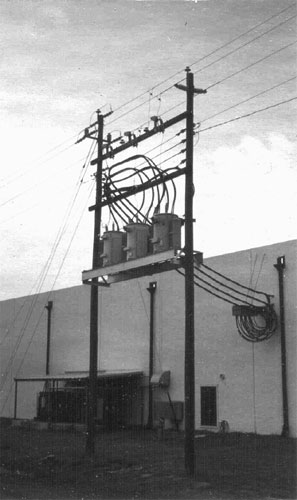When we talk about minimum ground clearances of span conductors, we have to know the sag of the conductor because the minimum height of attachment on a structure to comply with the National Electrical Safety Code® (NESC®) is the minimum clearance plus the maximum sag of the conductor. The ground clearance for equipment cases and rigid live parts is very simple and yet often ignored. Too often someone says, “Mount it high enough so someone doesn’t bump his head on it.” This design “philosophy” is a gross violation of Rule 232B2 & 3 (page 72) of the 1997 NESC.
Equipment Cases
Equipment cases fall into two categories “ungrounded” and “effectively grounded.” “Effectively grounded” by definition on page 6 of the 1997 NESC is “”Intentionally connected to earth through a ground connection or connections of sufficient low impedance and having sufficient current-carrying capacity to limit the buildup of voltages to levels below that which may result in undue hazard to persons or to connected equipment.” If something is not “effectively grounded” then it is considered “ungrounded.”
Rigid Live Parts

Photo 1
Rigid live parts are rigid metal parts that are energized. Transformer bushings, transformer leads, jumpers and the energized parts of switches and fuses are some examples of rigid live parts. The minimum clearances specified in Rule 232B2 & 3 (Table 232-2) are a function of the normal activity anticipated under the equipment. For example, an effectively grounded equipment case mounted on a pole located in a parking lot must be at least 15 feet above ground. The same enclosure located in a park may be mounted at a lower level for accessibility provided the case does not unduly obstruct a walkway (Footnote 7 of Table 232-2). The clearances for a case mounted on a pole located within the limits of the highway right-of-way are the same for a pole located in the parking lot even though the pole may be well away from the travel lanes of the highway.
The metal beams that support the transformers in the following paragraph are considered part of the transformer cases. (see photo )
If this two-pole structure was located in a parking lot and the transformer cases were considered effectively grounded, then the beams would have to be at least 15 feet above ground. The high voltage bushings have to be 18 feet above ground for voltages up to 22kV phase to ground. For voltages greater than 22kV, the clearances have to be increased by 0.4 inches per kV above 22kV.
If you have general questions about the NESC®, please call me at 302-454-4910 or e-mail me atdave.young@conectiv.com.
National Electrical Safety Code® and NESC® are registered trademarks of the Institute of Electrical and Electronics Engineers.










Find Us on Socials